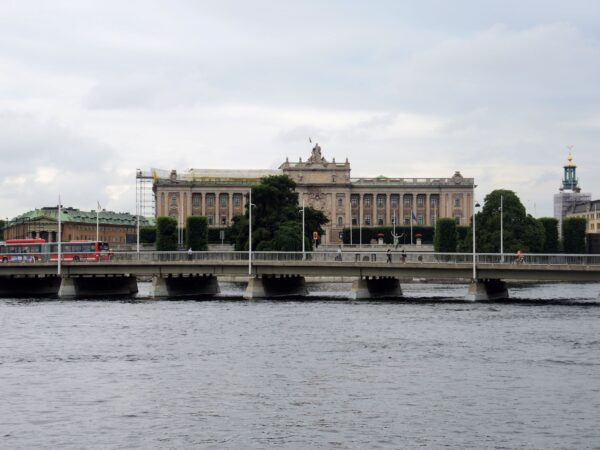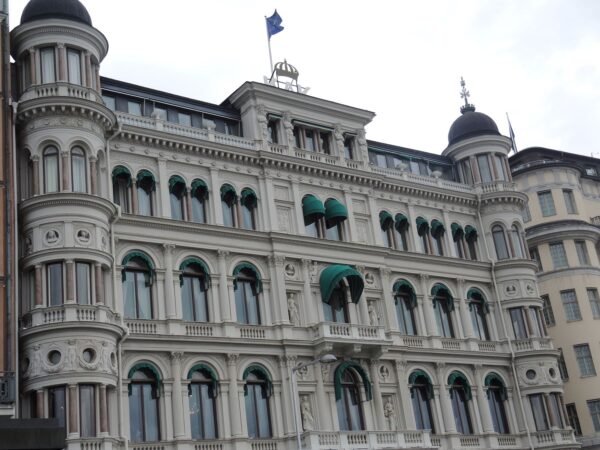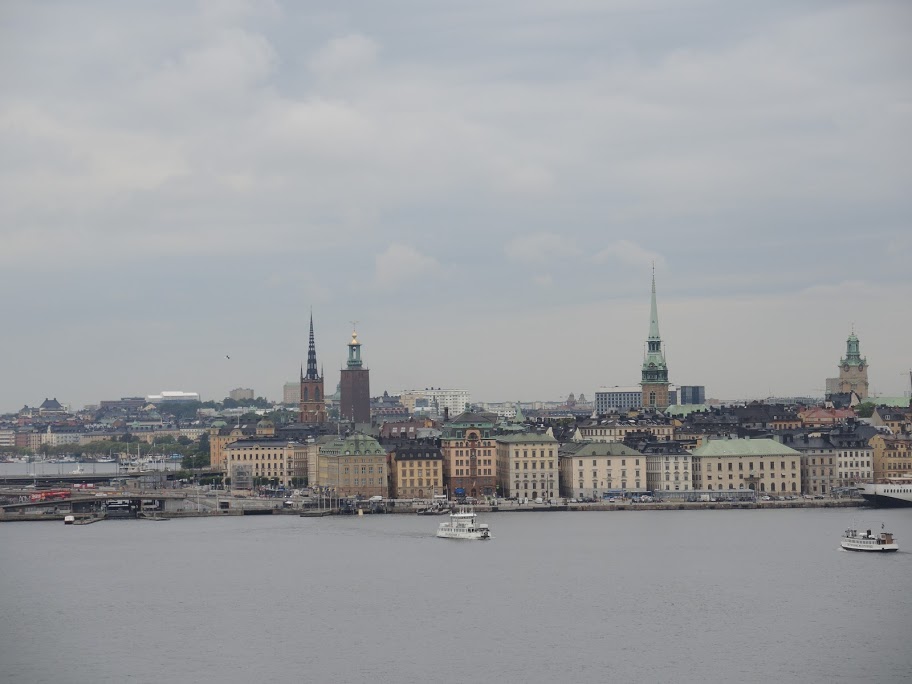Quick. Think of an island city with lots of canals. I’ll go out on a limb here and guess that the first city that came to mind was Venice, Italy. And with good reason. It’s the oldest, the showiest, the most famous island city, and it probably has more islands than any other.
But, as my travels over the past few years have shown, Venice is not alone as a city of islands and canals. Two years ago I visited the island and canal city of Saint Petersburg. On this trip I visited the island and canal city of Copenhagen and learned how some of it was modeled after another similar city – Amsterdam.
And with that, let me offer you a warm(ish) welcome to Stockholm – by far the largest of the Scandinavian capitals by population. While Copenhagen can claim between 560,000 and 600,000 residents and Oslo can brag of its 625,000, Stockholm and its 14 islands dwarfs them both with a population of more than 900,000. Not a large city by any international measure but a giant by Scandinavian standards.
As I mentioned, 14 islands comprise the city and the largest of these is Södermalm – the central district of the city – and, I think, the vantage point of the photo below.
The earliest evidence of human population dates back to about 600 years before the common era but it was Birger Jarl, who was, for all practical purposes Sweden’s leader, who established the city itself on the island the Swedes call Gamla Stan (The Old Town) in 1252. Although the Swedes at some point intended to move his remains from the cemetery in Varnhem, they didn’t. Thus, Birger Jarl isn’t buried in the city he founded. You can, however, see the cenotaph of him at the base of the tower outside city hall.
Some of you might know this while others might not but Sweden was, at one time, one of the great European powers. The Swedes began their growth into an empire in the middle of the 16th century. By the early 17th century Sweden controlled much of the Baltic region including all of Finland (where the Swedes held sway for nearly seven centuries), and parts of Norway, Denmark, Estonia, Latvia, and Russia that lasted into the early 18th century.

The photo above is the Swedish Parliament.
The beginning of the end for Sweden came with Peter the Great’s victory in the summer of 1709 in the Battle of Poltava (located in modern day Ukraine). Most historians mark this as the pivotal moment in the rise of the Russian Empire and the decline of the Swedish Empire with the transition culminating a century later in the Finnish War. This latter conflict lasted about 19 months from February 1808 to September 1809 and ended with the Treaty of Fredrikshamn.
For Sweden, the war had consequences far beyond ending their seven centuries of dominion over Finland which now became the Autonomous Grand Duchy of Finland in the Russian Empire. It eventually ended the reign of the House of Holstein-Gottorp, which had held the throne through four kings and over a period of 67 years, saw the rise to power of the House of Bernadotte (an interesting story we’ll get to shortly), as well as prompting the drafting of a new constitution and a new Act of Succession.
But, before we get to those bits of history, let’s spend some time in Stockholm. First, admitting that I spent a minimal amount of time in each place and even at the risk of offending my legions of Danish and Norwegian readers, I hold the opinion that Stockholm is the loveliest of the three Scandinavian capital cities. Whether it’s the 250-year,old royal palace, or the golden spired city hall where they hold the Nobel Prize dinner, or the grand facades of the Opera House and National Theater, or simply the amount of green space the city incorporates, a blanket of beauty envelops the city.
For me, the reason for Stockholm’s beauty is in some ways a natural reflection of the city itself and I viewed this as having three principal components. About a third of Stockholm is comprised of green spaces. Another third is water – surrounded as it is by the Baltic Sea and Lake Mälaren. The other third is then, the buildings that comprise the city.

If you continue the journey with me, you’ll eventually learn how a Frenchman, Jean Baptiste Bernadotte, came to establish a new royal house in Sweden in the first decade of the 19th century. Although Swedish troops led by Bernadotte himself took part in the Napoleonic Wars in 1813-1814 (during which Sweden lost over a third of the former empire’s territory), the king established a policy of neutrality known somehow as The Policy of 1812.
In the subsequent two centuries, Sweden’s military and government have taken part in peacekeeping actions but have never initiated any direct armed conflict. Thus, while the reasons and circumstances are quite intricate and complex, the simple fact is that Sweden, and Stockholm in particular, survived both major European conflicts of the 20th century largely unscathed. As a result, buildings from the 18th and 19th centuries survive mostly intact, making Stockholm – at least in my view – an architecturally beautiful city.
We’ll continue the tour in part two.
